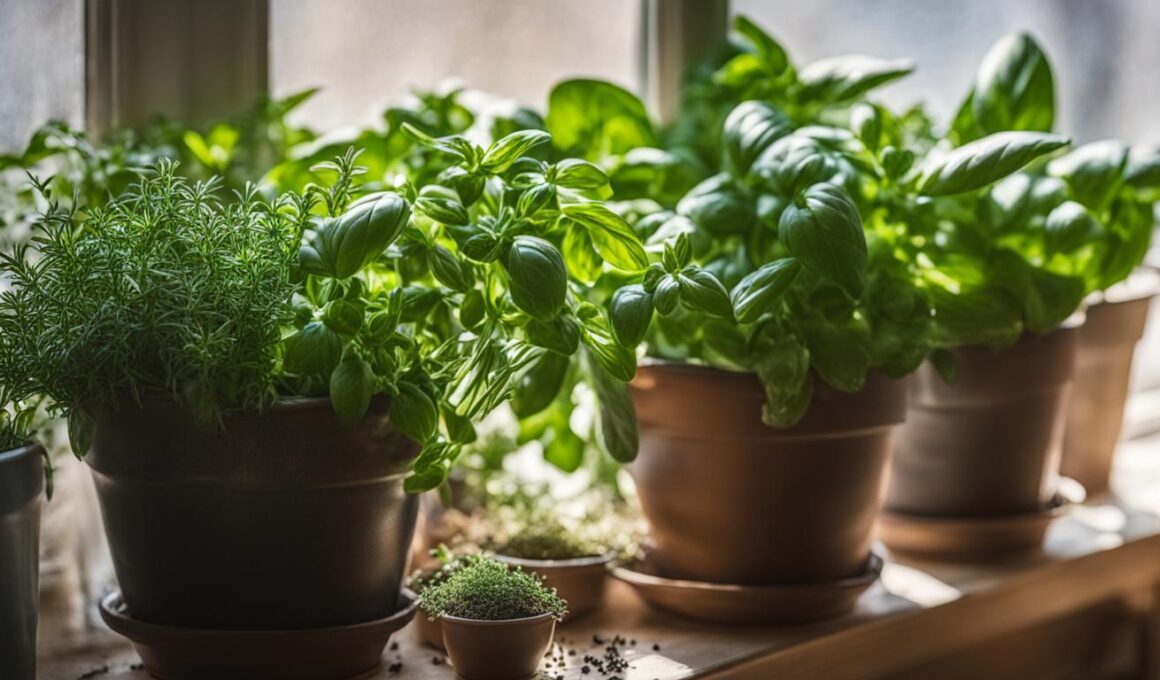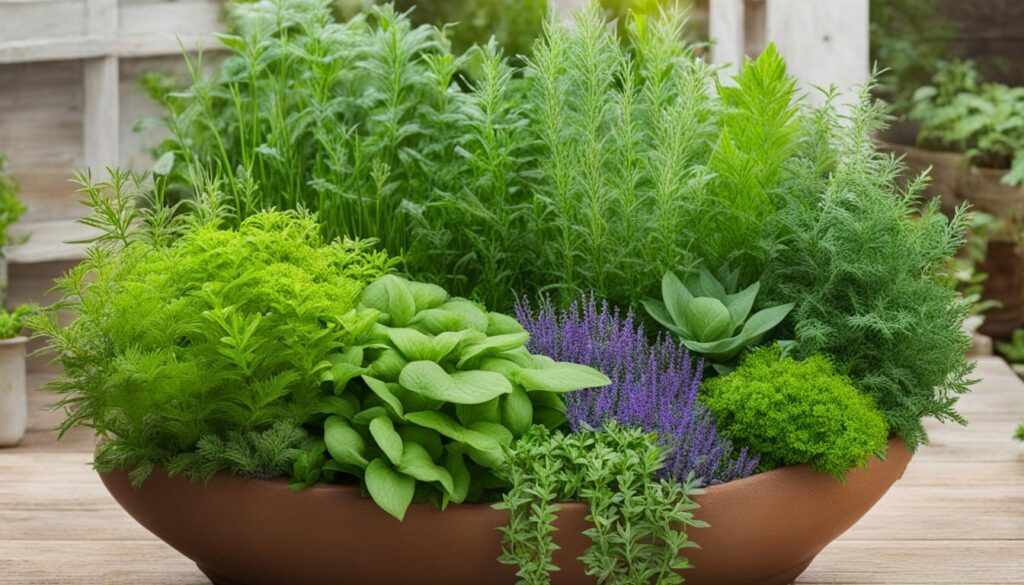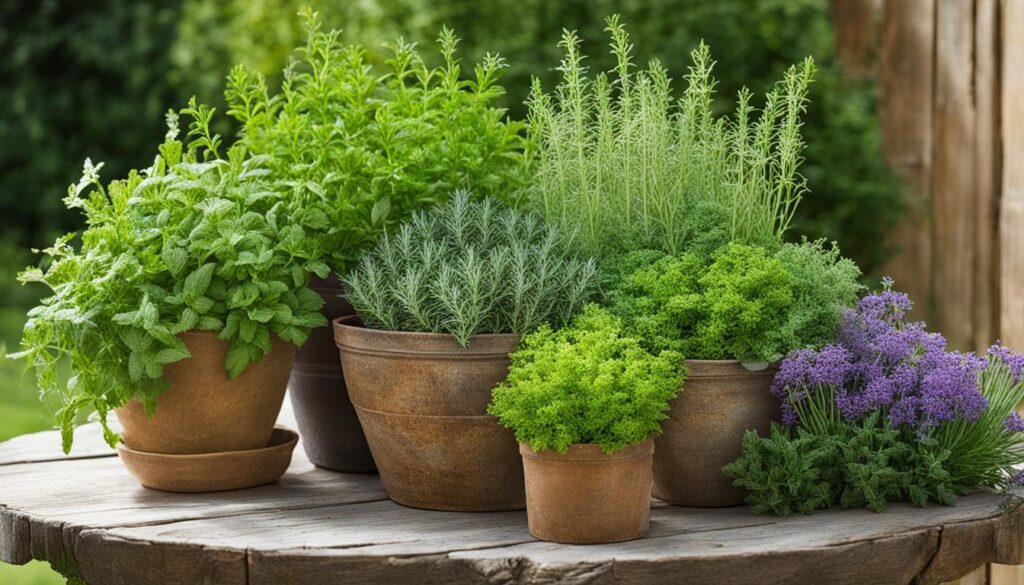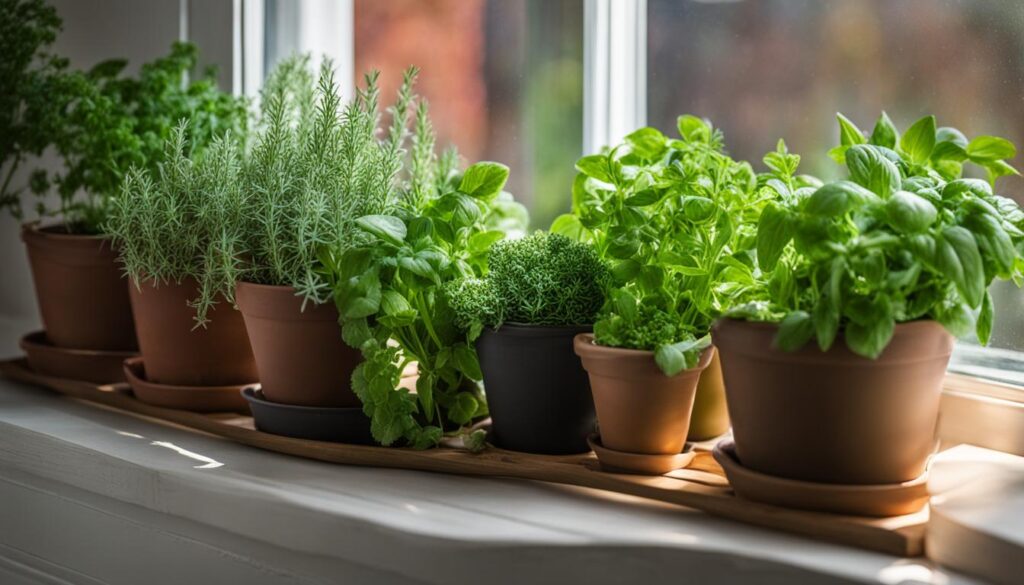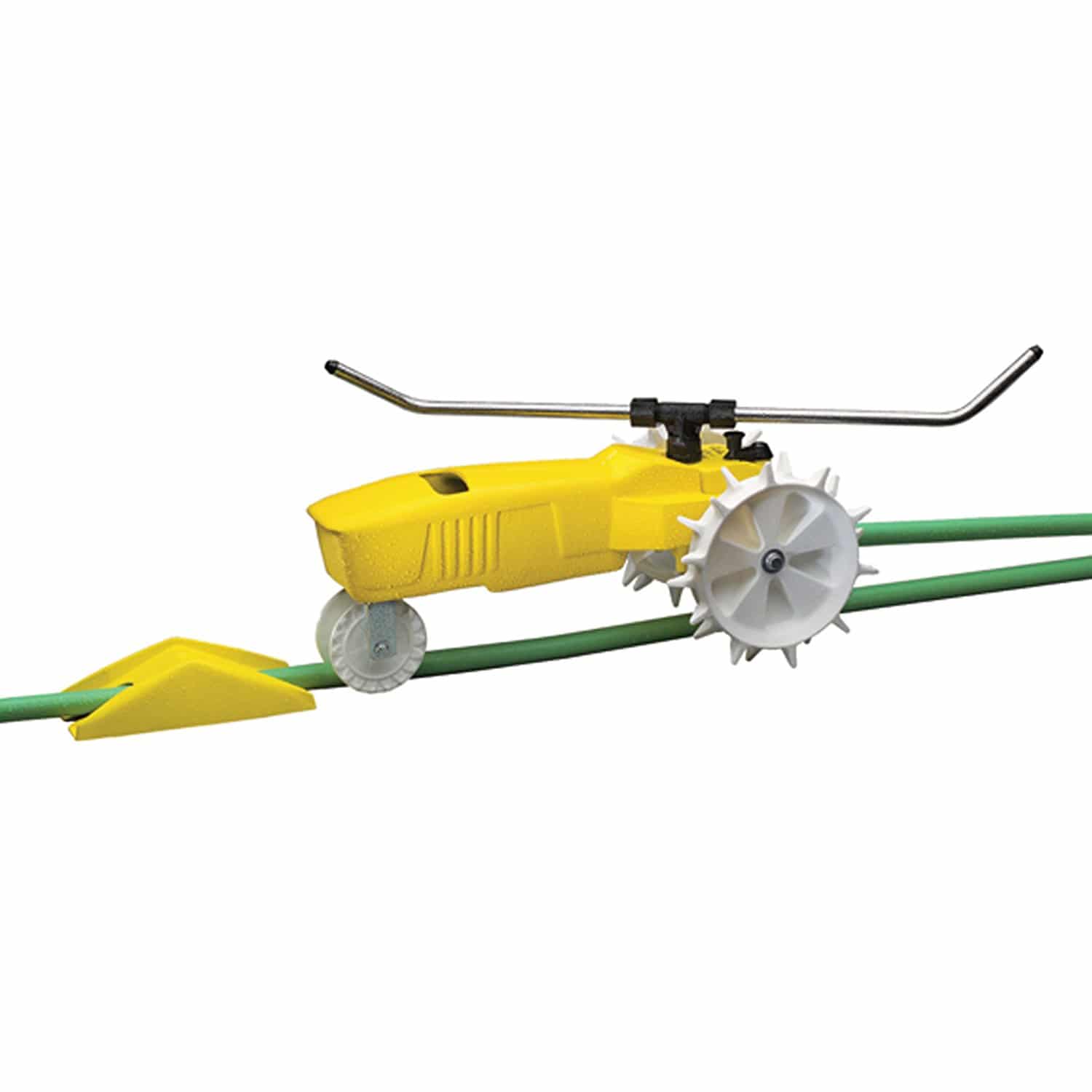Are you wondering if you can plant multiple herbs in one pot? The answer is yes! It’s entirely possible to grow a variety of herbs together in a single container, as long as they have similar growing requirements. This guide will provide you with the necessary information to successfully plant and care for multiple herbs in one pot.
Key Takeaways
- Planting multiple herbs in one pot saves space and improves moisture retention.
- Choose herbs that share a growing season and have similar light, water, and nutrient requirements.
- Consider your local gardening climate when selecting which herbs to plant together.
- Mediterranean herbs prefer drier soil and lots of sunlight, while moisture-loving herbs need good drainage and full sun conditions.
- Mint herbs can be invasive and should be planted separately or mixed with different varieties of mint.
Benefits of Companion Planting Multiple Herbs in One Pot
Companion planting multiple herbs in one pot offers several benefits. First and foremost, it saves space, making it an excellent option for those who have limited gardening areas, such as urban dwellers. By planting herbs together in one pot, you can maximize the available space and grow a variety of herbs in a compact area.
Another advantage of companion planting is that it improves moisture retention. When multiple herbs are planted together, the soil is less exposed, which slows down evaporation. This means that each individual plant requires less watering and maintenance, making it easier for the gardener.
Additionally, companion planting can help reduce the spread of diseases. By planting different herbs together, you can break up the garden and create a barrier that slows down the transmission of diseases. Some gardeners even report that certain herb combinations make the plants healthier and enhance their taste.
Enhancing Space Efficiency
Companion planting multiple herbs in one pot is an effective way to optimize space in your garden. By grouping herbs with similar growing requirements, you can create harmonious combinations that thrive together. This not only saves space but also allows you to enjoy a diverse range of flavors and aromas in a single container.
Planting multiple herbs in one pot not only saves space but also improves moisture retention and reduces disease issues.
Improving Moisture Retention
When multiple herbs are planted together, the soil is shielded from direct sunlight, which helps to slow down evaporation. This means that the soil retains moisture for a longer period, reducing the need for frequent watering. Improved moisture retention not only benefits the herbs but also reduces the workload for the gardener.
Decreasing Disease Spread
Companion planting can also help reduce the spread of diseases among herbs. By planting different herbs together, you introduce diversity into the garden, making it more difficult for diseases to spread rapidly. This approach can be particularly useful in preventing the build-up of specific diseases that may target certain herb species.
What Herbs Can You Plant Together?
When it comes to planting multiple herbs in one pot, it’s important to choose herbs that have similar growing needs and can thrive together. Here are some popular herb combinations that you can try:
Basil, parsley, and lemon balm: These moisture-loving herbs can be planted together in a container with good drainage and full sun conditions. They not only complement each other in flavor but also create a beautiful and aromatic herb pot.
Rosemary, thyme, oregano, sage, chives, dill, and lavender: These Mediterranean herbs prefer drier soil and lots of sunlight. Planting them together in a container will create a visually appealing pot of herbs that can be used for cooking or even as an ornamental display.
Mint herbs: Mint can be quite invasive, so it’s best to either plant different varieties of mint in separate containers or grow them together in a container with part shade and part sun. This will help prevent overcrowding and control their spreading habits.
When choosing herb combinations, consider the height of the herbs and their irrigation needs. You want to make sure that all the herbs in the container have enough space to grow and receive adequate water. It’s also important to avoid planting herbs that have aggressive spreading tendencies, like fennel, with other herbs to prevent overcrowding and maintain a balanced pot of herbs.
Ultimately, the herbs you choose to plant together should be based on your personal preferences and the growing conditions in your area. Experiment with different combinations and have fun creating your own herb garden in a pot!
Herbs Suitable for Container Gardening
Container gardening is a convenient and practical way to grow herbs, especially if you have limited garden space or want the flexibility to move your plants around. Many herbs are well-suited for container gardening and can thrive in pots with the right care and conditions.
Choose Herbs with Similar Growing Needs
When selecting herbs for container gardening, it’s important to choose herbs that have similar requirements for light, water, and soil nutrition. This ensures that the herbs will grow harmoniously together and make maintenance easier for you. For example, herbs like rosemary, thyme, and sage prefer drier conditions and can thrive in containers with well-drained soil. On the other hand, herbs like parsley, basil, and mint require more consistent moisture and can be grouped together in containers.
Consider Different Container Types
There are various container types that can be used for growing herbs. A strawberry jar or a container with multiple pockets is perfect for cascading herbs like creeping thyme or prostrate rosemary. This allows the herbs to spill over the sides and create an attractive display. Additionally, consider using hanging baskets or window boxes for herbs like trailing rosemary or cascading mint varieties. Choosing the right container type can enhance the visual appeal of your herb garden.
Experiment with Pleasing Combinations
Don’t be afraid to experiment with different combinations of herbs in your containers. Certain herbs, such as lemon verbena and lemon thyme, have a pleasant aroma when planted together. Mixing herbs with different textures and colors can also create an aesthetically pleasing arrangement. Just make sure to provide adequate space for each herb to grow and avoid overcrowding, as this can lead to competition for resources.
Conclusion
Planting multiple herbs in one pot is a practical and efficient way to grow a variety of herbs, especially in limited gardening spaces. By considering the herbs’ growing needs and your local gardening climate, you can create successful combinations of herbs in containers. Companion planting offers several benefits, including space-saving, improved moisture retention, and reduced disease issues.
Remember to choose herbs that have similar requirements for light, water, and soil nutrition. This ensures that the herbs in your pot will thrive and flourish together. Enjoy the process of growing your own herb garden and experimenting with different combinations of herbs in your pots. Happy herb gardening!
What are the benefits of planting multiple herbs in one pot?
Growing multiple herbs in a pot has numerous benefits. It saves space, promotes biodiversity, and makes care easier. Certain herb combinations also help repel pests or attract beneficial insects. Plus, it’s convenient to have a variety of fresh herbs at your fingertips for cooking and crafting.
FAQ
Can I plant multiple herbs in one pot?
Yes, you can plant multiple herbs in one pot as long as they share a growing season and have similar light, water, and nutrient requirements.
What are the benefits of companion planting multiple herbs in one pot?
Companion planting multiple herbs in one pot saves space, improves moisture retention, and reduces disease issues.
What herbs can I plant together?
Herbs that can be planted together depend on their growing needs and your local gardening climate. Moisture-loving herbs like basil, parsley, and lemon balm can be grown together. Mediterranean herbs like rosemary, thyme, oregano, sage, chives, dill, and lavender prefer drier soil and lots of sunlight. Mint herbs should be planted separately or different varieties of mint can be grown together.
What herbs are suitable for container gardening?
Most herbs are suitable for container gardening. Some options include rosemary, thyme, sage, parsley, basil, and mint. Choose herbs that have similar requirements for light, water, and soil nutrition.





